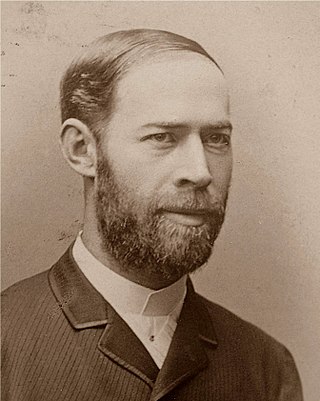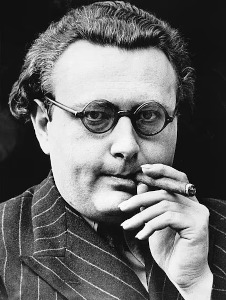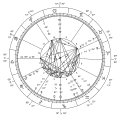Related Research Articles
Astrology is a range of divinatory practices, recognized as pseudoscientific since the 18th century, that propose that information about human affairs and terrestrial events may be discerned by studying the apparent positions of celestial objects. Different cultures have employed forms of astrology since at least the 2nd millennium BCE, these practices having originated in calendrical systems used to predict seasonal shifts and to interpret celestial cycles as signs of divine communications. Most, if not all, cultures have attached importance to what they observed in the sky, and some—such as the Hindus, Chinese, and the Maya—developed elaborate systems for predicting terrestrial events from celestial observations. Western astrology, one of the oldest astrological systems still in use, can trace its roots to 19th–17th century BCE Mesopotamia, from where it spread to Ancient Greece, Rome, the Islamic world, and eventually Central and Western Europe. Contemporary Western astrology is often associated with systems of horoscopes that purport to explain aspects of a person's personality and predict significant events in their lives based on the positions of celestial objects; the majority of professional astrologers rely on such systems.

Heinrich Rudolf Hertz was a German physicist who first conclusively proved the existence of the electromagnetic waves predicted by James Clerk Maxwell's equations of electromagnetism. The SI unit of frequency, the hertz (Hz), is named after him.

Johann George Adam Forster, also known as Georg Forster, was a German geographer, naturalist, ethnologist, travel writer, journalist and revolutionary. At an early age, he accompanied his father, Johann Reinhold Forster, on several scientific expeditions, including James Cook's second voyage to the Pacific. His report of that journey, A Voyage Round the World, contributed significantly to the ethnology of the people of Polynesia and remains a respected work. As a result of the report, Forster, who was admitted to the Royal Society at the early age of twenty-two, came to be considered one of the founders of modern scientific travel literature.
Hindu astrology, also called Indian astrology, jyotisha and, more recently, Vedic astrology, is the traditional Hindu system of astrology. It is one of the six auxiliary disciplines in Hinduism that is connected with the study of the Vedas.

Leonard Nelson, sometimes spelt Leonhard, was a German mathematician, critical philosopher, and socialist. He was part of the neo-Friesian school of neo-Kantianism and a friend of the mathematician David Hilbert. He devised the Grelling–Nelson paradox in 1908 and the related idea of autological words with Kurt Grelling.
Reinhold Ebertin was a German school teacher, publisher and astrologer.
The German Hamburg School of Astrology is a school of astrology based on the teachings of surveyor, astrologer and amateur astronomer Alfred Witte. It is characterized by use of astrological midpoints and eight astronomically-deduced hypothetical points, expanding the framework beyond traditional astrology.
Alfred Witte, was a German surveyor, astrologer, an amateur astronomer, and the founder of the Hamburg School of Astrology. Witte revived and further developed the use of astrological midpoints (a+b)/2 for precision in astrological analysis and prediction. Alfred Witte was found dead at 9:45 a.m. on 4 August 1941, Hamburg.

In astrology, certain stars are considered significant. Historically, all of the various heavenly bodies considered by astrologers were considered "stars", whether they were stars, planets, other stellar phenomena like novas and supernovas, or other solar system phenomena like comets and meteors.
Locational astrology is any of various types of astrology that factor in specific locations of the Earth. The different types also carry a range of astrological techniques.

Louis de Wohl was a German-born Catholic author, and had served as an astrologer notable for his work with MI5 from England during World War II. Sixteen of his popular pre-war novels were the basis of movies. His later novels are literary hagiographies of notable Roman Catholic saints and of different periods of the Bible.
A midpoint is a mathematical point halfway between two stellar bodies that tells an interpretative picture for the individual. There are two types of midpoints: direct and indirect. A direct midpoint occurs when a stellar body makes an aspect to the midpoint of two other stellar bodies with an actual physical body at the halfway point. In other words, a direct midpoint means that there is actually a stellar body in the natal chart lying in the midpoint of two other stellar bodies. An indirect midpoint occurs when a stellar body makes an aspect to the midpoint of two other stellar bodies without a physical body at this midpoint.

Jürgen Ehlers was a German physicist who contributed to the understanding of Albert Einstein's theory of general relativity. From graduate and postgraduate work in Pascual Jordan's relativity research group at Hamburg University, he held various posts as a lecturer and, later, as a professor before joining the Max Planck Institute for Astrophysics in Munich as a director. In 1995, he became the founding director of the newly created Max Planck Institute for Gravitational Physics in Potsdam, Germany.

Valentin Naboth, known by the latinized name Valentinus Nabodus, was a German mathematician, astronomer and astrologer.
Events in the year 1893 in Germany.

Karl Krolow was a German poet and translator. In 1956 he was awarded the Georg Büchner Prize. He was born in Hanover, Germany, and died in Darmstadt, Germany.
Elsbeth Ebertin was a German graphic artist, writer and astrologer. Elsbeth used the pseudonym Elsa Gorlizia in her writings.
Kunst und Künstler: illustrierte Monatsschrift für bildende Kunst und Kunstgewerbe was a German periodical, that shaped the reception of art during the first third of the 20th century. It was in circulation between 1902 and 1933.
Astrology in Jewish antiquity is the belief that celestial bodies can influence the affairs of individuals and of entire nations upon the earth. This involves the study of the celestial bodies' respective energies based on recurring patterns that change by the hour, by the week, month, year or by several years. In each of these time categories one of the seven planetary spheres, or what are known as the seven classical planets: the Sun, Venus, Mercury, the Moon, Saturn, Jupiter, or Mars, along with the month's current Zodiac constellation, come into play and influence the sublunary world. At times, it involves a complex combination of several of these factors working together. In Judaism this belief is expressed by the biblical affirmation: "Do you know the laws of heaven / Or impose its authority on earth?" (Job 38:33), from which statement the Sages of Israel have inferred, "There is no single herb below without its corresponding star above, that beats upon it and commands it to grow."
References
- ↑ Ebertin acknowledges this in Ebertin 1972 p.11
- ↑ Ebertin acknowledges substantial reference to the earlier work of Alfred Witte in Ebertin 1972, pp.28, although Ebertin differed with Witte on methodological approach.
- ↑ "Cosmobiology". Archived from the original on 2009-07-07. Retrieved 2009-11-21.
- Brau, Jean-Louis: Larousse Encyclopedia of Astrology, McGraw-Hill Books, New York US, 1977.
- Ebertin, Reinhold: Astrological Healing, Samuel Weiser Books, York Beach ME US, 1989.
- Ebertin, Reinhold: Combination of Stellar Influences, Ebertin-Verlag, Aalen, Germany, 1972.
- Greaves, Doris: Regulus Ebertin Cosmobiology beyond 2000, Regulus Astrological Publications, Red Hill ACT, Australia, 1999.
- Kimmel, Eleonora: Cosmobiology for the 21st Century, American Federation of Astrologers, Tempe AZ US, 2000.
- Ober, Aren: Midpoint Interpretation Simplified, 2nd Edition, Cotter Books, Cleveland OH US, 2009.
- Witte, Alfred: Der Mensch, Ludwig Rudolph Verlag, Hamburg, Germany, 1975.
- Witte, Alfred: Regelwerk für Planetenbilder, Ludwig Rudolph Verlag, Hamburg, Germany, 1928.
